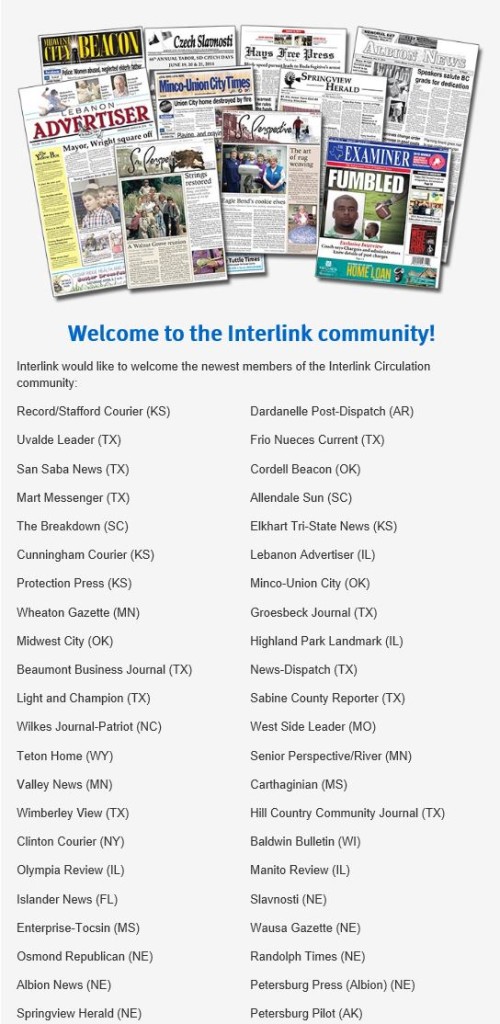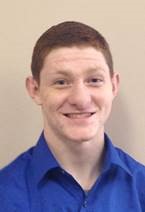
June 2014 Community Journal Newsletter
Living history
Johnson Publications publisher Lori Pankonin, right, watches a presentation at the print shop in Railroad Town, which is part of the Stuhr Museum’s Living History Community in Grand Island, NE. The tour was a fundraiser for the Nebraska Press Foundation as a kickoff to the Nebraska Press Association’s annual convention in April. For more photos from the Nebraska convention, click here. Interlink photo/Helen Sosniecki
Imagine telling advertisers subscriptions are up 10%
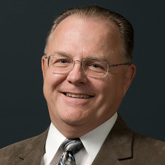 By William E. (Bill) Garber
By William E. (Bill) Garber
Founder
Now imagine it will take just minutes a month to grow your circulation that much in less than a year.
That is what we imagined when we created Interlink Smart Sampling™.
Here is how Smart Sampling™ works.
A whole month’s worth of Smart Sampling™ requires perhaps a dozen extra clicks, two sets of inserts going into just the sample papers, and, of course, posting the payments and starting the new subscriptions. Really.
• Start the month by picking a mailing route to sample. Click.
• Close issue the usual way. Click. (The usual click, not an extra click!)
• Label papers the usual way.
• Identify the separate group of just sample papers. (They are conveniently grouped altogether.)
• Insert a letter from the publisher into the sample papers. The letter explains that this is the first of four issues of your paper they will receive without charge. The letter explains that the fourth issue will include an envelope they can conveniently use if they would like to subscribe to the paper for a whole year for just $.
• Insert envelope for convenient subscription ordering into the sample papers of the fourth issue sampled.
• Stop sampling the mailing route. Click.
The four-issue sample is designed to start a reading habit that you will make really convenient to continue by using the new-subscription offer that includes the convenient remittance envelope.
Smart Sampling™ creates a reading habit for potential subscribers, while regular use of Smart Sampling™ creates a simple publishing habit that grows circulation at first and maintains circulation once achieved.
If Smart Sampling™ feels like a promising habit you would like to add to your publishing collection, Interlink is ready. Heck, I’m ready! Let me know with an email (bill@ilsw.com). I’ll introduce one of our Smart Sampling™ coaches to you to help you find Smart Sampling™ every bit as easy as I’ve just described!
Stop printing postage statements
By Brad Hill
President
Have you ever published an issue where the page count on your postal documentation was higher than that of the paper itself? Answering ‘yes’ has become ever easier as mailing requirements and the complexity of supporting documentation have increased over time.
Today, it’s common for periodicals to submit two or more postage statements for every issue, requiring up to eight pages each. And for every postage statement there must be an accompanying Qualification Report, which can easily add another six pages or more. The 3553 CASS Summary adds one more page.
Although the Qualification Report and 3553 are not strictly required for each issue, they must be provided upon request. Add it up to see that it can easily take 30 pages of documentation or more just to mail a single issue! The good news: you don’t have to print even one page of it when you submit your documentation electronically.
More than 200 publications now submit all of their postal documentation online with a single click through Interlink Circulation, with dozens more adopting the method, officially termed eDoc, each week.
Operators prefer using eDoc because it saves time and eliminates the handoff to whoever would have taken hardcopy reports to the post office. Postal clerks like it because they don’t have to manually enter anything into their PostalOne! system, saving them time and eliminating human error.
Using eDoc also satisfies a requirement for overnight drop privileges, by providing required documentation to the USPS ahead of when the mail is inducted. Outside of overnight drop, however, there is no requirement for newspapers to submit postal documentation electronically.
Notwithstanding the advantages of using eDoc, it is important to understand that USPS’ backend system, PostalOne!, is under constant development, and efforts to enhance that system do occasionally break what had been working. When that happens, submitting hardcopy reports provides a straightforward fallback, and they also may be used to request refunds if the error caused USPS to miscalculate postage due. To identify and prevent such issues, I recommend comparing USPS-calculated postage due against a print preview of the postage statement in Interlink Circulation.
Moving to eDoc is surprisingly simple, and easier than ever since Interlink worked with USPS to eliminate the most common problem relating to PostalOne! — account setup. For the steps to begin using eDoc, see the related how-to article in this newsletter, or visit http://interlink.flywheelsites.com/?s=eDoc or contact our Client Solutions team for assistance at 888-473-3103.
Lewis County Press visit
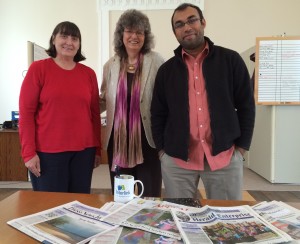 Lewis County Press General Manager Tej Ghosh, accountant Peggy Wolf, left, and Interlink Senior Sales and Marketing Manager Helen Sosniecki are shown in Lewis County Press’ new offices in an historic church building in LaGrange, MO. The company’s newspapers, which use Interlink Circulation, are on the table in the foreground.
Lewis County Press General Manager Tej Ghosh, accountant Peggy Wolf, left, and Interlink Senior Sales and Marketing Manager Helen Sosniecki are shown in Lewis County Press’ new offices in an historic church building in LaGrange, MO. The company’s newspapers, which use Interlink Circulation, are on the table in the foreground.
The Reality of the Next Few Years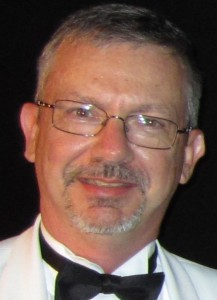
By Mike Buffington, publisher
Mainstreet Newspapers, Inc., Jefferson, GA
Reprinted with permission. Written in response to April column by Ken Blum in Black Inkling on The Challenges Hometown Newspapers Face.
Interesting comment on status of community newspapers. While we have not seen the depth of problems many metro papers and regional dailies have, to suggest we have avoided the reality of a changing economic environment is to ignore the obvious.
While one might argue that community newspapers have a unique niche because of their local content and demand for readership, the readership issue is very different from the business model changes we face.
Consider:
–Some 60% of U.S. counties are losing population as younger people migrate toward cities and suburbs. Community newspapers cannot exist or thrive in communities that are being torn asunder by depopulation.
–As big box stores become more ubiquitous, they replace local merchants who are traditional ROP advertisers. Most big box stores don’t run ROP but focus on preprints if they do any local advertising at all. The problem is that preprint rates will never be higher in the future than they are today; in fact, I’d argue that preprint rates have not changed in the last two decades due to increasing pressure from the big boxes to lower preprint rates and/or give “value added” free advertising. How will community newspapers pay the bills of increasing expenses when ROP is in decline and preprint rates are frozen? (And large preprint vendors wait 90-120 days to pay.)
–Public notices make up a large percentage of revenue for many rural community newspapers. But there is increasing pressure in many states for some of those to go online. That pressure freezes public notice rates where they can never be increased lest we open a debate about their value in a digital world. Given the political climate, some public notices could disappear overnight due to a legislative action over which we have no control.
–Some big categories of traditional community newspaper advertisers have migrated to online marketing. Real estate and automotive are the two that we all have felt. And for the foreseeable future, finance is a weak category of local revenue as banks retrench.
–Our newspaper websites will never, in our lifetimes, generate enough revenue to pay for the cost of real news gathering. Pageview rates are very, very low and pageviews in rural areas are so low that little revenue can be generated compared to traditional print revenues. And I’d argue that paywalls won’t solve the online revenue problem.
–Online viewing has put increasing rate pressure on traditional subscription rates. Many people, especially the younger generations, expect news to be “free.” So how do we generate more reader revenue in a climate where the end user expects to pay nothing for content even as our cost of distribution increases?
There are exceptions to all of this, of course. Resort areas and those around high-demographic communities are in a unique position and can better deal with some of these pressures. And there are some isolated markets that have not been hit hard by the big boxes and where local merchants still advertise in their local newspapers.
But many rural community daily and weekly newspapers are being greatly challenged by a very volatile economic environment.
Some of this might have hit us earlier, but during the 1980s-1990s, we were able to dodge some of the impact due to a booming economy and the greater efficiency digital cameras and computers brought to community newspapers.
We were able to shed a lot of production costs during those decades from the revolution of technology. Today, however, we have reached a plateau and future cost savings via technology are likely to be incremental.
I’m a big believer in community newspapers and the value they bring. But just because we believe we are indispensable doesn’t make it so in the rough and tumble world of the marketplace.
I don’t have the answer, but I do think there will continue to be downsizing and consolidation at many newspapers as we try to shed expenses. That, I think, is the reality of the next few years.
Weekly newspaper publishers’ protest produces positive result Newseum’s ‘Today’s Front Pages’ includes ‘non-dailies’
By Bill Tubbs, Publisher
North Scott (IA) Press
Reprinted with Permission
(April 30, 2014, edition)
Community newspapers across America organized what appears to have been a successful protest two weeks ago to get the Newseum in Washington, D.C., to include us in its Today’s Front Pages exhibit.
The Newseum, for those who haven’t been there, is an interactive museum of news and journalism located on Pennsylvania Avenue, near the U.S. Capitol. It is a seven-level, 250,000-square-foot museum with 15 theaters and 14 galleries.
Its mission is “to help the public and the news media understand one another better” and “to raise public awareness of the important role of a free press in a democratic society.” The Newseum’s operations are funded by the Freedom Forum, a nonpartisan foundation dedicated to “free press, free speech and free spirit for all people.”
In five years, the Newseum attracted more than 2.25 million visitors, making it one of Washington’s most popular destinations. A front page from each of the 50 states can be read by passers-by.
The rub was that front pages from the 85 percent of the nation’s newspapers that are “non-daily” were not welcomed. Those newspapers account for 75 percent of total print circulation of U.S. newspapers.
It started when community publishers were in Washington, D.C., in March for their annual summit with lawmakers. They noticed an exhibit about a fictional TV anchorman occupying an entire level at the Newseum – but very little about the community press.
Gary Sosniecki, a retired Missouri publisher who lives in Le Claire, Iowa, wrote an editorial about the snub that was printed in the newsletter of the International Society of Weekly Newspaper Editors (ISWNE). His wife and co-publisher, Helen, had an inspiration. “What would happen if all 5,500 weeklies forwarded their front pages to the Newseum on the same day?”
One thing led to another. Steve Thurston, a journalism teacher at Montgomery College in Rockville, Md., helped ISWNE organize a “front page blitz” in which The North Scott Press and weeklies throughout the English-speaking world emailed our front pages to the Newseum on April 17, which is the birthday of Huck Boyd, the legendary community journalist from Phillipsburg, Kan.
The front pages rolled in to the Newseum nonstop – more than 130 – and publishers were even more determined when they were told at midday that weeklies weren’t welcomed.
The onslaught continued until the late afternoon when the Newseum’s senior manager of media relations Jonathan Thompson conceded. “We are going to change that policy. We will begin including weekly newspapers in that exhibit. It’s a conversation the Newseum has been having for quite a while. When people get together like this and feel strongly about a specific issue, and mobilize and make arguments, it does have an impact.”
Barbara Selvin, an assistant professor of journalism at Stony Brook University in New York, summed up the victory with an article for the Poynter Institute, which studies modern media. She quoted Chad Stebbins of Joplin, Mo., the executive director of ISWNE, who said the larger issue is respect for the passion and energy that community journalists bring to their work. “We have forced them to at least start considering weeklies as real, legitimate newspapers that should stand aside their daily counterparts.”
NNA president Robert Williams, a community publisher from Blackshear, Ga., complimented ISWNE for a successful campaign. He recognized that exhibit space at the Newseum is limited, costly, and planned many years out. But he said this is the beginning of a conversation with Newseum officials, asking their help in raising the profile of community newspapering through educational programs on-site and in other locations around the country. Also “promoting speakers who understand and appreciate the role community newspapers play in supporting the bedrock principles of democracy as well as our service as a link between thousands of community businesses and their customers.”
Amen! In my nearly 44 years at The NSP, I’ve seen how hard the reporters and staff members work to record our local history as it happens, 52 weeks a year, including holidays. The paper you are reading is possible because of their dedication and untiring efforts, and the support of our local businesses who use our pages to communicate with their customers.
Our staffs and budgets are smaller than the big dailies, and it is not as glamorous here as in the big newsrooms, but I’ve known many a journalist who would trade the buzz of the big city in a heartbeat for the chance to be part of a community like ours where we have close relationships with our readers and they accept us, warts and all. The NSP’s Sarah Hayden, for example, worked for USA Today.
You can move to a smaller market without sacrificing journalistic standards, too. Earlier this year, I judged the editorials competition for the large weeklies in Wyoming, which included some of the finest newspapers in America. I was immediately able to understand the complex issues in that state because of their well-researched, hard-hitting editorials. The staffs of these papers include editors and writers who have fled the big-city rat race for a different lifestyle.
That’s the part of American journalism which, until now, has been overlooked by the Newseum. I visited the Newseum briefly in 2013 and took a picture of the front-page display. There is so much to see and do at the Newseum that you could spend hours or days. It is a “must see” if you’re traveling to Washington, D.C. And sometime soon the community newspapers will have a place there, too.
EDITOR’S NOTE: Go to http://www.newseum.org/todaysfrontpages/ to check out today’s front pages on the Newseum website, which now includes community newspapers. Send an e-mail to frontpages@newseum.org for specific instructions on how your newspaper can participate in “Today’s Front Pages.”
Welcome to the Interlink community!
Interlink would like to welcome the newest members of the Interlink Circulation community:
Preparing for electronic postal report submission
By Larina Hollivay
Client Solutions Representative
Q. What are the steps I can take to prepare for eDoc (electronic documentation) submission?
A. To begin the set up process, please review the postal acronyms below, and then follow the steps provided:
CRID= Customer Registration ID
BCGW= Business Customer Gateway
MID = Mailer ID
CAPS (optional) = Centralized Account Processing System
BSA = Business Service Administrator
Steps to set up eDoc:
• Verify your computer has the latest version of Java
• Verify you have the latest version of Interlink Circulation installed
• Verify the CRID and MID are listed in Circulation*
• Verify BCGW account USER NAME and PW are correct and entered into Circulation (under Configure Postal One!)
• In Circulation, select the PostalOne! tab, choose the applicable Wizard option for your publication, and follow the prompts to complete the set up
*You may want to confirm at this time that you have access to ‘Manage Mailing Activity’ in your BCGW account. Follow these steps to verify:
• Log into BCGW
• Choose Manage Account
• Choose Manage Services
• Under Service, verify you are Approved for Manage Mailing Activity. If you are not approved, you will have to request access through the BCGW, and the BSA for the location will have to approve you.
If your eDoc test submission fails, please send your Log Files to Interlink and contact our Client Solutions team at (888) 473-3103 for assistance in connecting your account to PostalOne!
Interlink welcomes…
Chris Allgood joins Client Solutions
Join us in welcoming Chris Allgood to Team Interlink. Chris is very excited to be a member of the Client Solutions’ team. His background should give him an advantage in assisting our customers, as he has been employed with USPS for about two years. Chris is eager to apply his postal knowledge to Client Solutions.
When not working, Chris enjoys sports, the beach and music festivals! He currently is continuing his education at Lake Michigan College but has yet to determine a major although he is leaning towards Management and Marketing.
Take a bow…
Thalmann elected KPA president
Dan Thalmann, publisher of the Washington County News and Linn-Palmer Record, was elected president of the Kansas Press Association during KPA’s annual convention in April.
Another Interlink customer, Sarah Kessinger, publisher of the Marysville Advocate, was elected second vice-president.
O’Leary elected WNA president
From The WNA Bulletin
March 2014 edition
Carol O’Leary, publisher of the Star News in Medford was elected president of the Wisconsin Newspaper Association during the group’s 160th convention Feb. 27-28 in Milwaukee.
O’Leary has served the WNA since 1998 when began her first term on the WNA Foundation Board of Directors. She continued on the Foundation board in various capacities, including president, until 2009 when she began her first term on the WNA Board of Directors. In 2011, she became third vice-president.
She has served on the Inland Press Association Foundation Board and was president of the International Society of Weekly Newspaper Editors in 2005-2006. She also is a member of the National Newspaper Association.
She is an owner of Central Wisconsin Publications, Inc. and publisher of The Star-News and the Courier Sentinel. She also is the owner of Tri-Star Printing Co., a central printing plant in Abbotsford, which prints 10 weekly newspapers.
Her daughter, Kris O’Leary, was re-elected WNA Foundation president at the convention.
News-Review named best weekly in division
From the Vilas County (WI) News-Review
March 5, 2014 edition
MADISON – For the second time in three years, the Vilas County News-Review was named the best large weekly newspaper in the state after receiving a company-best 17 Better Newspaper Contest awards last week for writing, photography and ad design.
Contest winners were honored last Friday night (Feb. 28) at the 160th annual convention of the Wisconsin Newspaper Association (WNA), staged at the Milwaukee Marriott West in Waukesha.
The WNA Foundation received, 2,806 entries from 125 newspapers, awarding the News-Review eight firsts, five seconds and four thirds. The News-Review also publishes The Three Lakes News.
The biggest award came at the end of the awards ceremony when, based on total awards points for the 60 largest weekly newspapers in the state, News-Review Publisher Kurt Krueger was presented the trophy for the best weekly in Division D.
It was the third year that the WNA recognized the best daily and weekly newspapers in six classes, with three daily divisions and three weekly divisions. The Vilas County News-Review also won the award in 2012.
Deaths…
Crusading journalist Pat Gish dies at 87
Pat Gish, who with her late husband Tom published The Mountain Eagle in Whitesburg, KY, died April 13 at her home at the age of 87.
The couple bought the newspaper in 1957. Over the years, The Eagle earned national attention for the crusading owners for their coverage of poverty, education, strip mining, substandard housing and health and safety issues in the surrounding coal mines.
The couple’s reporting and editorials brought threats, advertising boycotts and an arson attack in 1974 which was instigated by a local policeman. After the fire which nearly destroyed the newspaper’s office, the Gishes changed their newspaper’s motto from “It Screams” to “It Still Screams.”
The Gishes were honored by the Rural Journalism Institute of the University of Kentucky in 2005 as the first recipients of an award named for them. The Gish Award honors rural journalists who “demonstrate courage, tenacity and integrity often needed to render public service through journalism.”
Their son, Ben, took over editorship of the paper about 10 years ago.
Hard-nosed journalist Robert Trapp dies at 87
Rio Grande Sun founder Robert E. Trapp, 87, died June 1 in Santa Fe, NM. He and his wife, Ruth, who died in January, started the newspaper with friends in 1956, according to “Watchdogs, Town Criers, Historians: The People and Newspapers of ISWNE.”
Trapp was honored by ISWNE in 1992 with its Eugene Cervi award, and served as its president in 1997. He also served as president of the New Mexico Press Association and has been inducted into its Hall of Fame.
The ISWNE history notes that Trapp “spent his career battling the political machine in New Mexico’s Espanola Valley.”
In describing his father, The Albuquerque Journal quoted Robert Trapp, Jr., as saying, “He was an old-time journalist who did the job all of us should be doing today, and he did it to the detriment of advertising and the business model. He focused on news. That’s all he cared about. He wanted to make money to pay the bills, so he could write news. That was the only reason he paid the bills.”
What customers are saying…
From Nebraska…
“Your program works great, and your people are fantastic!”
Steve Ourecky
Slavnosti (NE)
Interesting links…
Newspapers still among most influential sources
We may be living in the digital age, but the printed word still packs a punch, according to research by social scientists at the University of Manchester in the UK. Their study as reported on Mail Online found that the demise of newspapers has been grossly exaggerated. See more: http://tinyurl.com/n8ejufl
New book explores future of newspapers
Penelope Muse Abernathy, the Knight chair in Journalism and Digital Media Economics at the University of North Carolina at Chapel Hill, has written a book that profiles newspapers across a wide circulation range as it explores the future of community journalism. For more on the book or the projects surrounding it, go to http://www.savingcommunityjournalism.com/
Weekly newspapers join Newseum front pages
Go to http://www.newseum.org/todaysfrontpages/ to check out today’s front pages on the Newseum website, which now includes community newspapers after a push by International Society of Weekly Newspaper Editors’ members.
For instructions on how your newspaper can participate in the “Today’s Front Pages” project, send an e-mail to frontpages@newseum.org
Understanding data easier with diagrams
David McCandless turns complex data sets into simple diagrams to tease out patterns and connections to help navigate today’s information glut. He suggests good design may change the way we see the world. http://www.ted.com/talks/david_mccandless_the_beauty_of_data_visualization
Interlink Calendar
Friday, July 4 – Independence Day: Office closed.
Monday, Sept. 1 – Labor Day: Office closed.
Postal Calendar
Friday, July 4 – Independence Day: No mail delivery.
Monday, Sept. 1 – Labor Day: No mail delivery.
INTERLINK CLASSIFIEDS
NEED A NEW LABEL PRINTER? No need to spend your cash buying a new one. Just use Interlink’s Monthly Printer Service. For only $24.95 per month, Interlink will provide you a fully supported thermal label printer for unlimited use in your office. Current model being supplied is the Citizen CL-S621. Label/ribbon packages are available from Interlink. Call 888-473-3103.
SAVE YOUR GAS MONEY from those trips to the office supply store for labels. Let Interlink ship them directly to you. Call 888-473-3103 for pricing.
FREE TRAINING! Our Summer Special lets three lucky customers keep the standard $190 training fee to stimulate their local economy. We will provide a FREE two-hour training session to the first three Interlink customers who respond to this ad. Call Helen or Jessica at 888-473-3103. A trained, efficient Interlink Circulation operator can save your newspaper time and money. If you have an operator who has not been through our training process, who learned by sharing information internally with the last operator, chances are not all of the program’s efficiencies are being utilized. If you don’t respond in time to grab one of the free offers, we still can sign your operator up for an intense two-hour training session for only $190. Let us help get your operator up to speed on all Interlink can do to help you and your operation.
Share your good news
Send news about your company or staff awards and accomplishments to share in our next quarterly Interlink Community Journal. Email them to helen@ilsw.com or angela@ilsw.com
Share your thoughts
Have you written a column or editorial that targets issues relevant to the community-newspaper industry that you would like to share in our next quarterly Interlink Community Journal? Columns or editorials may be emailed to helen@ilsw.com or angela@ilsw.com
Share your circulation promotions
Have you had a successful circulation-subscription campaign that you would like to share with fellow publishers in the community-newspaper industry? We’d be happy to share them in our next quarterly Interlink Community Journal. They may be emailed to helen@ilsw.com or angela@ilsw.com




